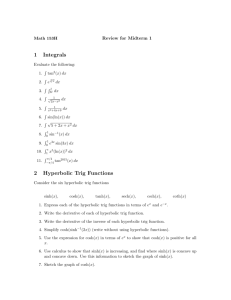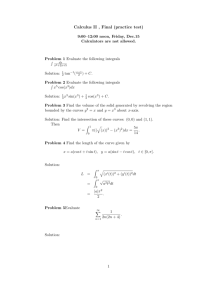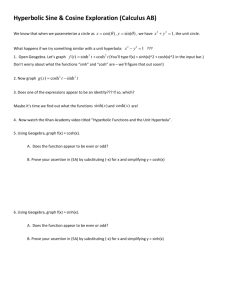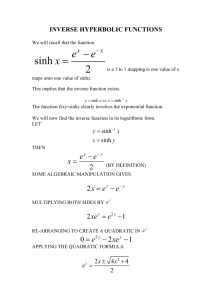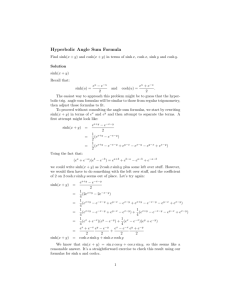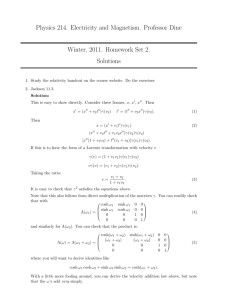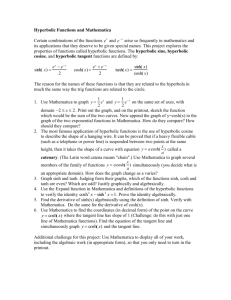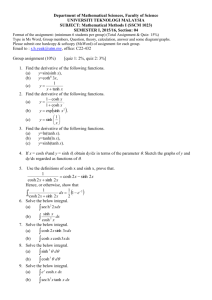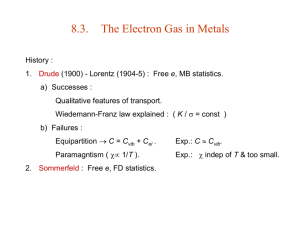Hyperbolic Functions (1) definitions • sinh x = ex − e−x 2 • cosh x = 2
advertisement
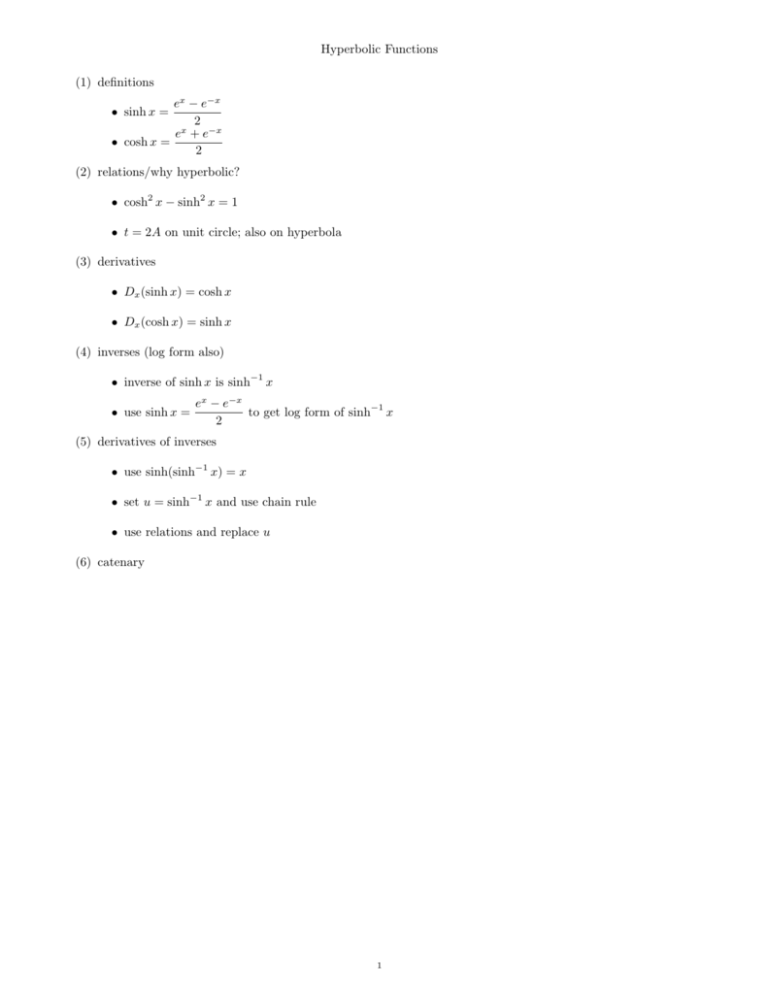
Hyperbolic Functions (1) definitions ex − e−x 2 ex + e−x • cosh x = 2 • sinh x = (2) relations/why hyperbolic? • cosh2 x − sinh2 x = 1 • t = 2A on unit circle; also on hyperbola (3) derivatives • Dx (sinh x) = cosh x • Dx (cosh x) = sinh x (4) inverses (log form also) • inverse of sinh x is sinh−1 x • use sinh x = ex − e−x to get log form of sinh−1 x 2 (5) derivatives of inverses • use sinh(sinh−1 x) = x • set u = sinh−1 x and use chain rule • use relations and replace u (6) catenary 1 2 Consider a section P Q of length x. We’ll obtain a differential equation for the shape y = f (x of the hanging cable by balancing horizontal and vertical components of the forces acting on P Q. These forces are: • T0 : the horizontal tension pulling on the cable at P • T : the tangential tension pulling on the cable at Q • ws: the force of gravity pulling downward on the section P Q When we equate the horizontal and vertical components, we find that T cos φ = T0 and T sin φ = ws We divide the second equation by the first and find that dy T sin φ ws = tan φ = = dx T cos φ T0 Since s is a function of x, this differential equation is not as simple as we might hope. But after differentiating both sides, we see that d2 y w ds = 2 dx T0 dx We know from our study of arc length that s 2 dy ds = 1+ dx dx and so d2 y w = dx2 T0 s 1+ dy dx 2 This is the differential equation that will give us the shape y = f (x) of the hanging cable. The problem now is to find a solution of the equation. The solution involves a standard trick - we’ll let p = dy dx , so that dp dx = d2 y dx2 . This gives us the simpler equation dp wp 1 + p2 = dx T0 Rewrite this as 1 p The left side is just the derivative of sinh −1 1+ p2 dp w = . dx T0 p! Integrating both sides, we have sinh−1 p = w x + C. T0 Now p = 0 when x = 0 because the cable has a horizontal tangent at its lowest point P . This tells us that C = sinh−1 (0) = 0. This gives us w dy = p = sinh x . dx T0 To find y, we simply integrate both sides of this equation: T0 w y= cosh x +C w T0 If y0 is the height of the point P above the x-axis, then C = y0 − Tw0 , so the shape of the hanging cable is given by T0 w T0 y= cosh x + y0 − . w T0 w We may choose the location of the x-axis so that y0 = T0 x , and then the equation takes the simpler form T0 w y= cosh x . w T0 If we let a = T0 /w, then the equation becomes even simpler: y = a cosh x a .


